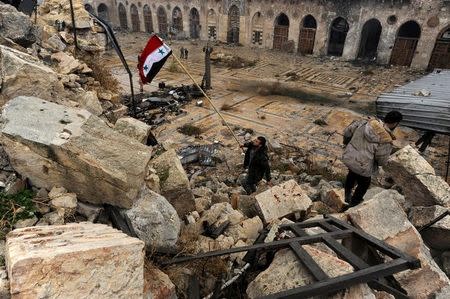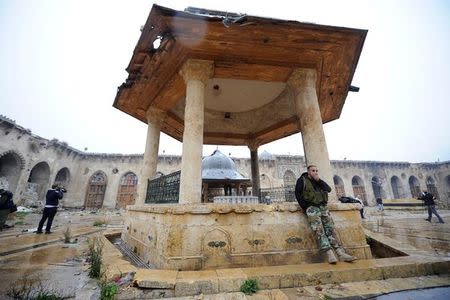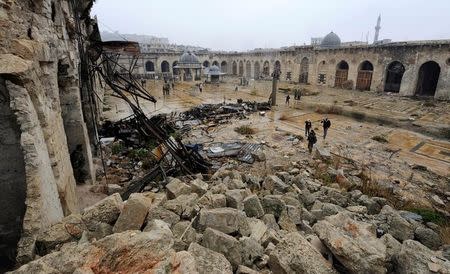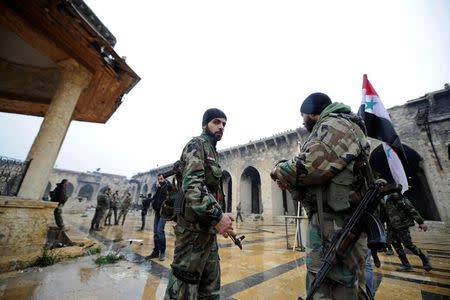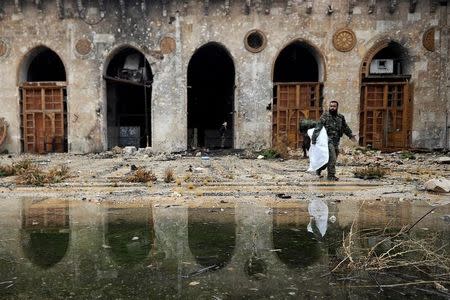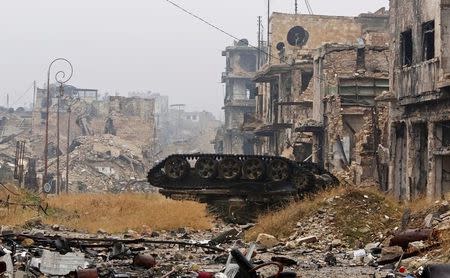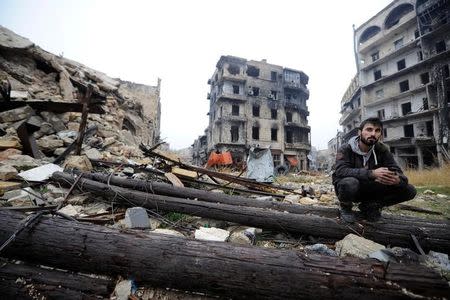After siege, Aleppo's famed Umayyad Mosque is damaged but endures
By Laila Bassam ALEPPO, Syria (Reuters) - The remains of the medieval Umayyad Mosque's felled minaret lie in its once-elegant courtyard along with discarded mattresses, fragments of rockets and antique doors, but, after years of fighting, Aleppo's holiest monument endures. The minaret and the covered markets that surrounded the mosque may have been destroyed in battles between the Syrian army and rebel fighters in 2012 and 2013, but despite suffering great damage, much of the mosque has survived. After sweeping army advances over recent days that pushed rebels far from the Old City where the mosque was on a front line, Syria's Grand Mufti Ahmed Badr al-Din Hassoun hailed its recapture by government forces. "I remember when I would give sermons at dawn prayers," he said in an emotional speech on state television, referring to the mosque as "the crown of Aleppo". But in Tuesday's rain, the bullet-pocked and scorched walls of the mosque, built in the 11th century on the site of an older building, cut a forlorn sight. "Our memories have been erased. It's a big loss," said a woman walking through the rubble of the area with her husband to the remains of their shop that they had abandoned when fleeing the fighting. As reporters toured the mosque in the company of an army escort, a soldier climbed the hillock of rubble that was once the 11th-century minaret and replaced the flags of Islamist rebel factions with that of the Syrian state. The mosque has suffered before, from fire and from the wanton destruction of the Mongols, who seized Aleppo in 1260, two years after sacking Baghdad, then the great centre of Islamic civilisation. Nearby, around the imposing main entrance to Aleppo's great raised citadel, the remnants of war, including shell parts and shrapnel, lay thick on the ground. Although the citadel stayed in government hands, its entranceway was also on the front line. In the streets of the old market near the mosque, burned shop goods and clothed mannequins lay strewn among the rubble. In one place, the only undamaged thing was a signpost saying: "Welcome to the Umayyad Mosque". Inside, the tomb of the Prophet Zakariah has been encased behind a high wall built while it was in rebel hands, and some of the relics, including teeth, have gone missing. Many Islamist rebels in Aleppo follow Salafist Muslim ideas that hold shrines and tombs to be tantamount to idolatry. The former shopkeeper said: "The importance of the Old City is more symbolic than material. But I'm very distressed by the ruin. It is sad because it's the history of thousands of years." (Writing by Angus McDowall in Beirut; Editing by Robin Pomeroy)

